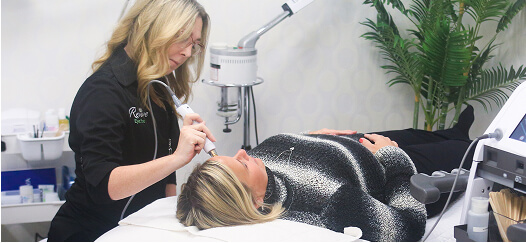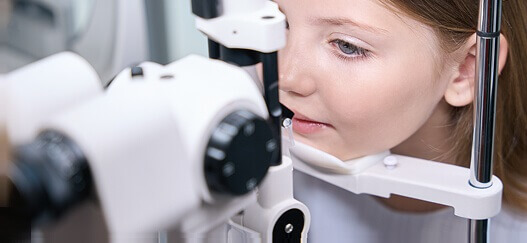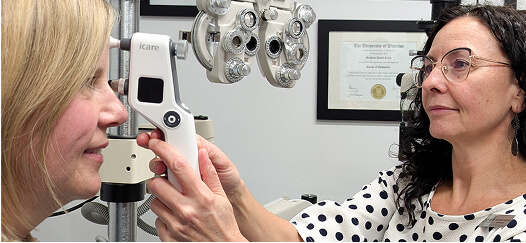Dry eye syndrome is a common condition that can cause irritation, discomfort, and a range of other frustrating symptoms.
It occurs when your eyes don’t produce enough tears or the right quality of tears to keep them properly lubricated.
For many, dry eye symptoms can significantly impact daily activities and overall quality of life. Fortunately, effective treatment is available.
Take a moment to complete our quick Dry Eye Assessment Form — it helps our team better understand your symptoms and tailor the right treatment plan for you.

Signs and symptoms of dry eye
Signs of dry eye to look out for include:
- Stinging or burning sensations in the eyes
- Redness or irritation
- Sensitivity to light
- Watery eyes (as a reflex to dryness)
- Blurred or fluctuating vision.
Why choosing the right eye doctor is key
Dealing with dry eye syndrome can be frustrating, but the good news is that, with the right care, it can be managed. Finding an optometrist who truly understands the condition and your unique symptoms is key to getting the relief you need.
By taking the time to understand your specific needs, our eye doctors can create a personalized treatment plan that helps ease discomfort, and keep your eyes healthy in the long run.


Treating dry eye syndrome
Our treatments go beyond over-the-counter drops, offering more targeted and long-lasting relief for dry eye symptoms:
Radiofrequency therapy: This treatment helps stimulate your meibomian glands, which are responsible for producing the oil component of your tears. Restoring proper function can improve tear quality and reduce dryness.
Eye drops and heat therapy: Specialized drops can help reduce inflammation, improve tear production, and restore comfort. Heat therapy, often applied with warm compresses, can help to loosen blockages in the tear glands, promoting better tear flow.
Meibomian gland expression: A procedure performed to unblock the oil-producing glands in your eyelids, allowing for better tear production and alleviating dryness.
Anti-inflammatory prescription drops: These are effective in reducing inflammation on the surface of the eye, promoting healing, and improving tear quality.
Lid and lash hygiene: Keeping your eyelids and lashes clean can help prevent inflammation and infection, which can contribute to dry eyes.
What can you do at home?
In addition to professional treatments, there are several lifestyle changes and home remedies that can help manage dry eyes:
Managing screen time: Long hours on digital devices can worsen dry eye symptoms. Taking regular breaks and following the 20-20-20 rule – look 20 feet away for 20 seconds every 20 minutes – can help reduce eye strain.
Environmental adjustments: Adjusting humidity levels in your home or office, using air purifiers, and avoiding dry or windy environments can all help maintain moisture in your eyes.


Trust in our personalized treatment plan
While pharmacy drops may offer short-term relief, they often fall short in treating chronic dry eye syndrome. Our team uses advanced, personalized therapies that target the underlying causes of your symptoms, providing more effective, long-lasting results compared to standard over-the-counter products.
Long-term dry eye management
For those with chronic dry eye, long-term management may include prescription treatments like cyclosporine therapy to reduce inflammation and improve tear production. Ongoing care ensures that your condition remains under control, preventing further irritation or damage.










